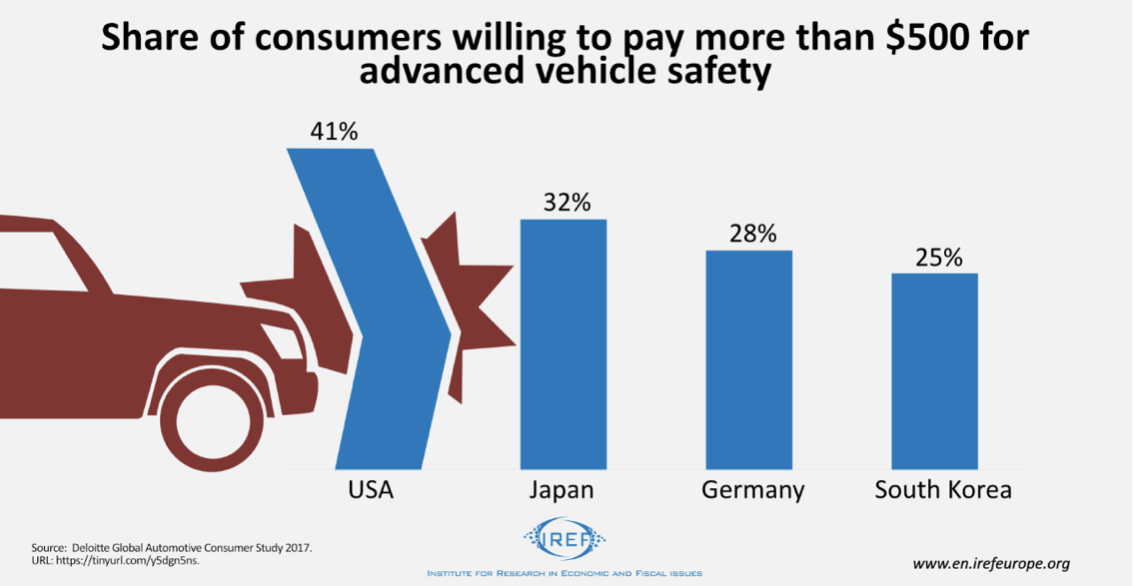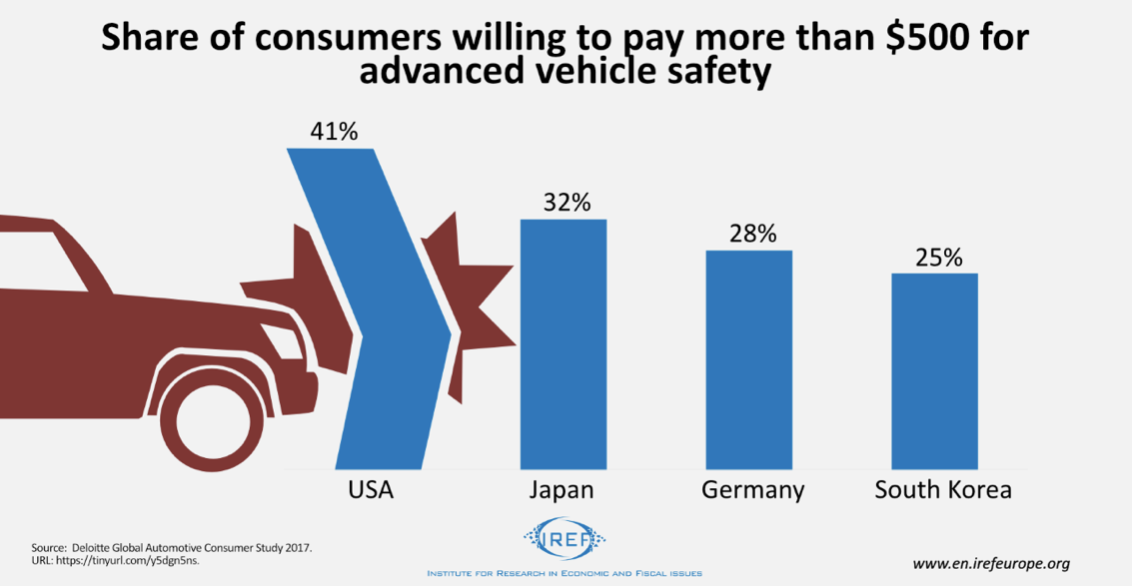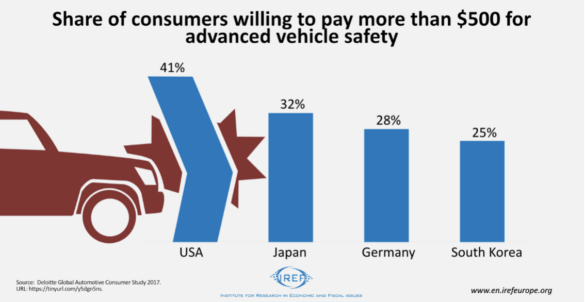Over the last few decades, our living standards have improved significantly. Today, cars are technologically sophisticated, apartments are comfortable, and pharmaceuticals are safer. The working of the markets has enhanced technological progress. Yet, technology does not progress linearly. There are plenty of ideas; some succeed, others fail due to lack of technical feasibility or of customers’ approval. If technological innovations prove their worth, they quickly become part of the products – without assistance by the state.
However, the introduction of high quality standards under pressure by interest groups or excessive governmental caution may lead to undesirable side effects. Products of low quality, which also happen to be cheaper, disappear from the market. This could happen, for instance, after the recent initiative by the European Commission to increase vehicle safety by making new safety and assistance systems in new vehicles mandatory. Other examples concerning accommodation and drug safety illustrate the disadvantages of standards being too high.
Everybody’s Darling: High Product Standards
High standards promise high quality, a long product life span and environmental sustainability. After all, high standards are supposed to guarantee safety, for example in vehicles, pharmaceuticals, or with regard to fire protection in apartments. All in all, high standards have obvious benefits and therefore a high reputation. At first glance, few things can be said against high standards, even when legally prescribed.
Standards: The Disadvantages
Nevertheless, there are potential disadvantages, too. Setting legal standards above the level of inferior but also cheaper goods means that those products can no longer be supplied. If the needs of all consumers are to be considered, including those of people who prefer inferior, cheaper products, hasty declarations of new minimum standards become problematic.
Technological innovations are at first usually more expensive than the alternatives already available. Therefore, producers begin to include innovations in more expensive products, so that the additional costs make up only a small part of the overall price of the commodity. As soon as costs decrease, for example thanks to larger-scale production, and consumers of cheaper goods begin to request the adoption of innovation, producers begin to introduce the new features in the cheaper segments of the market.
If the state declares new technological possibilities to be the new standard prematurely, cheaper goods of lower and average quality become more expensive, and their demand drops despite the presence of customers who would be willing to buy them. In brief, high standards harm consumers who would have otherwise bought cheap goods of inferior quality.
Possible Reasons for Systematically High Standards
Since they lack sufficient knowledge, it is difficult for legislators to find the right level for standards. Misjudgement, can thus easily lead to too high or too low standards. However, errors leading to exceedingly low standards will be systematically corrected by consumers: the products involved will disappear from the market. There is no such mechanism operating when the standards are too high. This is relevant because there are three reasons why legislators tend to pick standards that are too high.
First, paternalist governments may want to enforce high standards to protect consumers. The resulting increased production costs might be underestimated or neglected entirely.
Second, the legislator might introduce high standards as a form of self-protection. If consumers suffer from accidents, governments can refer to the introduction of high standards to demonstrate that they have done their best to prevent safety shortcomings.
Third, high standards can also be implemented following pressure by interest groups who want to restrict competition from low-quality products.
It is difficult to assess which of these incentives causes a particular standard to be high or too high. Nevertheless, there are many examples that illustrate the tendency to implement such high standards
Case Study 1: Mobility
Beginning in 2022, the EU Commission wants new cars to be equipped with systems that can recognise carelessness or fatigue, help with making u-turns, make the car stay within the lane, slow the vehicle down when facing danger, or prevent recurrent speeding.
Regardless of the potentially well-meaning reasons, setting such standards is likely to have disadvantages, too. The new rules will ensure that cheaper cars will be of higher quality, but also more expensive. Especially young, unexperienced drivers might then prefer to buy older cars, the safety systems of which are less advanced than those the EU has planned for new vehicles. This is illustrated by a survey by Deloitte, showing that German consumers are less than willing to bear the costs of new safety technology. The total effect of such mandatory safety systems, considering their impact on production costs, is therefore not necessarily positive.

Case Study 2: Accommodation
With regard to building new accommodation, there are indications that the regulatory requirements in Germany are too high. When implementing strict guidelines for fire safety, it is possible that the state only cares about the protection of its citizens. However, it is also possible that governments actually want to protect themselves, so that in case of disasters they can claim they have done everything they could to protect citizens’ wellbeing.
Higher costs coming from better fire safety are not visible in form of publicly visible disasters, but have to be borne year after year by the owners and tenants of property.
Case Study 3: Pharmaceuticals
The approval of new drugs illustrates governmental ambitions to avoid publicly visible disasters. Approved, harmful medication leads to visible victims and public reactions. An example is the drug thalidomide, first sold in Germany under the brand name Contergan, and the scandal around the associated birth defects. Pharmaceuticals are therefore tested rigorously during long trials, and will not get approval if there are doubts about their safety.
But the elaborate, obligatory tests and approval processes mean that people who could benefit from certain drugs receive them either too late or not at all. Hence, they carry the costs of higher standards.
One Size Fits All?
High standards have obvious benefits and usually less obvious disadvantages. These disadvantages often go beyond monetary costs in form of higher prices when products disappear from the market or never enter it in the first place.
The state should therefore avoid setting high standards too quickly. It definitely should not give in to those interest groups who lobby mainly for the purpose of eliminating competition. Moreover, it should refrain from protecting citizens from themselves. Finally, it should not raise standards solely for the purpose of protecting its reputation by preventing disasters.




